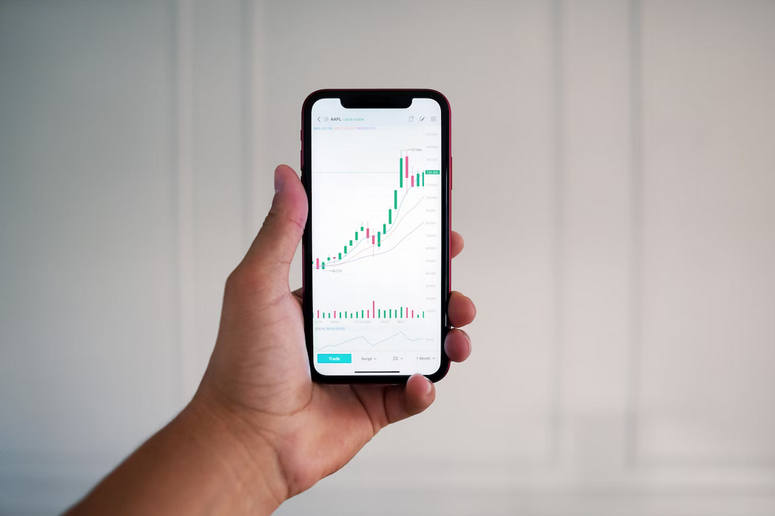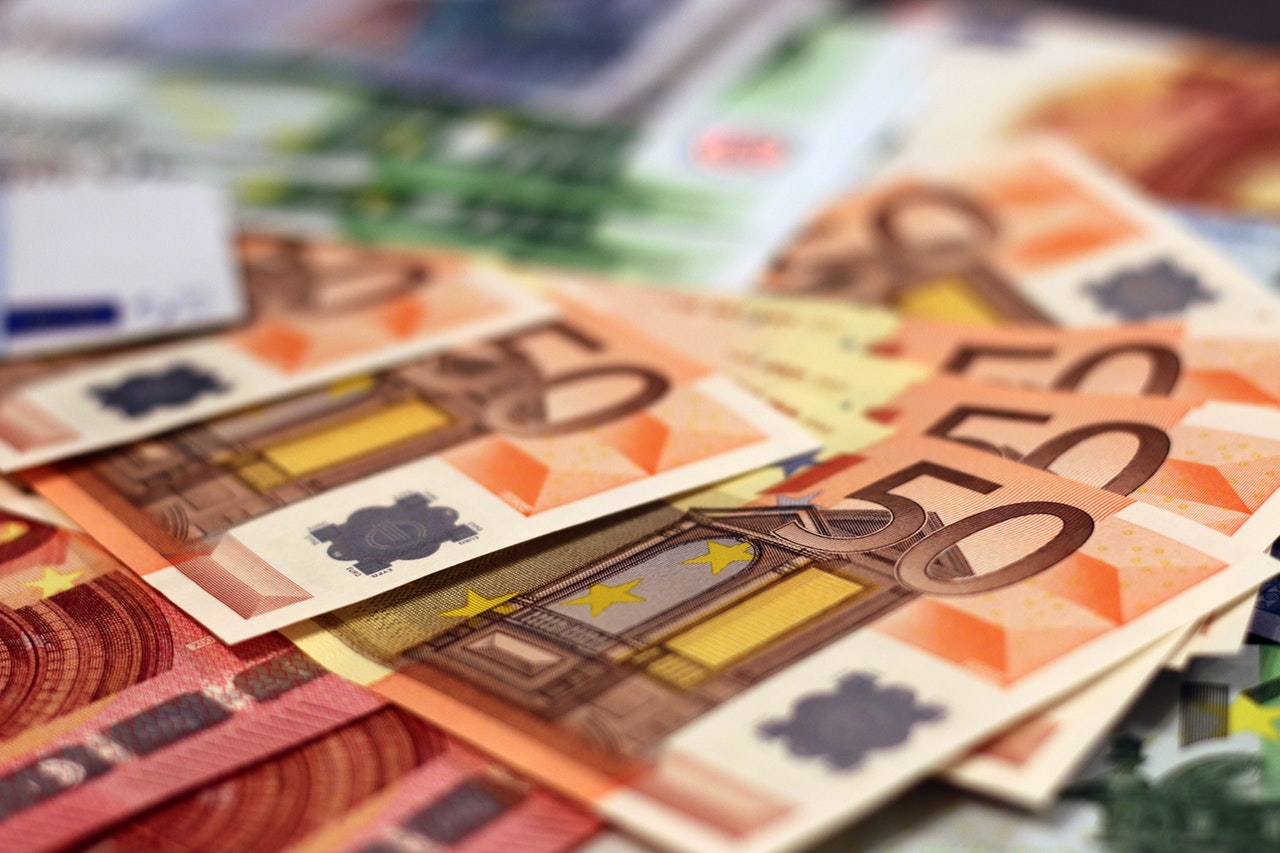Forex trading can be a thrilling yet challenging pursuit. With so many factors influencing currency movements, traders need tools to help them make informed decisions. One of the most effective methods is through candlestick charts. These visual representations not only showcase price movement but also reveal potential market sentiment. Imagine being able to read the story behind each price movement a tale of buyers and sellers competing for dominance in the market. Candlestick patterns serve as this narrative, providing insights that can lead to successful trades. Whether you’re a novice or an experienced trader, understanding these patterns is essential for navigating the forex landscape with confidence.
The History of Candlestick Patterns
Candlestick patterns have a rich history that dates back to 17th century Japan. They were developed by rice traders who needed a way to visualize price movements in the market. This innovative approach allowed them to make more informed decisions based on past performance. The technique was popularized by Munehisa Homma, who is often referred to as the father of candlestick charting. His methods not only focused on price but also incorporated emotions and psychology behind trading. It wasn’t until the late 20th century that these charts gained popularity in Western markets. Traders began recognizing their effectiveness in gauging market trends and reversals.
Why Candlestick Patterns Are Important in Forex Trading

Candlestick patterns are essential tools for Forex traders. They provide a visual representation of price movements, revealing market sentiment at a glance. Each candlestick reflects the open, high, low, and close prices within a specific timeframe. By analyzing these patterns, traders can gain insights into potential reversals or continuations in trends. Understanding candlesticks helps identify key support and resistance levels. This knowledge can guide entry and exit points effectively.
Common Candlestick Patterns and Their Meanings
Candlestick patterns reveal market sentiment and potential price movements. Recognizing these formations can give traders a significant advantage. One of the most common patterns is the Doji. It indicates indecision in the market, where buyers and sellers are in balance. A Doji can signal potential reversals when found at key support or resistance levels. Another popular pattern is the Hammer. This shape appears after a downtrend, suggesting that buying pressure may be increasing. It typically indicates that a bullish reversal could follow.
How to Read and Interpret Candlestick Charts

Reading candlestick charts involves understanding the unique shapes and colors of each candle. Each candle represents a specified time frame, showing four key price points: open, high, low, and close. The body of the candlestick indicates the opening and closing prices. If it’s filled or colored (often red), it shows that the closing price was lower than the opening. A hollow or lighter-colored body reflects a rising market where buyers have taken control. Wicks extend from both ends of the body. They represent price extremes during that period. Longer wicks suggest volatility; shorter ones indicate stability.
Strategies for Using Candlestick Patterns in Trading
To leverage candlestick patterns effectively, traders should combine them with other indicators. This approach enhances the reliability of trading signals. One effective strategy is to look for confirmation. Wait for a subsequent candle to validate the signal indicated by your chosen pattern. For example, if you spot a bullish engulfing pattern, an upward closing candle that follows can affirm your buying decision. Another tactic involves using support and resistance levels in conjunction with candlestick patterns. If a pattern appears near these critical points, it may signal stronger price action ahead.
Tips for Identifying and Trading With Candlestick Patterns
To effectively identify candlestick patterns, start by focusing on the time frame that suits your trading style. Day traders may prefer shorter intervals, while swing traders might opt for daily or weekly charts. Next, look for patterns at key support and resistance levels. These zones often signal potential reversals or continuations in the trend direction. Pay attention to volume as well; increased activity can validate a pattern’s significance. A bullish engulfing candle with high volume is more reliable than one with little participation.
Understanding candlestick patterns can significantly enhance your Forex trading skills. By familiarizing yourself with how these charts work, you gain insights into market sentiment and potential price movements. The history of candlestick patterns adds depth to their value in trading today. Recognizing the importance of these patterns is crucial for any trader looking to navigate the Forex market effectively. Each pattern tells a story about past price action, offering hints on future trends. Armed with this knowledge, traders can make more informed decisions.…






 Precious metals investments can offer many benefits to diversify your portfolio. One of the most popular reasons for investing in gold, silver, platinum, and palladium is their low correlation with stocks and bonds. This means that when stock markets slump or crash, the value of precious metals often increases instead of decreases, making it an asset class that can protect you from market volatility. Furthermore, precious metals are tangible assets that hold their intrinsic value over time, often increasing in value as the demand for them grows. Gold is considered one of the safest investments because it has been used as currency and a store of wealth for thousands of years and will always have some level of demand.
Precious metals investments can offer many benefits to diversify your portfolio. One of the most popular reasons for investing in gold, silver, platinum, and palladium is their low correlation with stocks and bonds. This means that when stock markets slump or crash, the value of precious metals often increases instead of decreases, making it an asset class that can protect you from market volatility. Furthermore, precious metals are tangible assets that hold their intrinsic value over time, often increasing in value as the demand for them grows. Gold is considered one of the safest investments because it has been used as currency and a store of wealth for thousands of years and will always have some level of demand.
 One of the easiest ways to improve your investment returns is to find lower-cost ways to invest. You can do this in several different ways. For example, you can use index funds instead of actively managed funds. Index funds typically have lower fees and expenses than actively managed funds. More of your money will go towards actual investment returns instead of fees.
One of the easiest ways to improve your investment returns is to find lower-cost ways to invest. You can do this in several different ways. For example, you can use index funds instead of actively managed funds. Index funds typically have lower fees and expenses than actively managed funds. More of your money will go towards actual investment returns instead of fees. One way to improve your investment returns is to take advantage of tax-efficient investing. This means investing in a way that minimizes your tax liability. For example, you might invest in a Roth IRA instead of a traditional IRA. With a Roth IRA, you pay taxes on the money you contribute but not on the money you withdraw in retirement. This can be a big advantage if you’re in a high tax bracket. Another way to take advantage of tax-efficient investing is to invest in municipal bonds. Municipal bonds are debt securities issued by state and local governments.
One way to improve your investment returns is to take advantage of tax-efficient investing. This means investing in a way that minimizes your tax liability. For example, you might invest in a Roth IRA instead of a traditional IRA. With a Roth IRA, you pay taxes on the money you contribute but not on the money you withdraw in retirement. This can be a big advantage if you’re in a high tax bracket. Another way to take advantage of tax-efficient investing is to invest in municipal bonds. Municipal bonds are debt securities issued by state and local governments.






 By working with only the Best Financial Planners, you can assess your current financial strength and how it correlates to your life goals. Of course, you can be confident and believe that you have done such a task for the rest of your life, and why should you bother with paying someone else to do it for you? Well, the answer is quite simple. It is exactly your confidence that can mislead you into making unwise financial decisions. Besides, a professional financial planner is updated with the latest trends in investment and their risks, which is a piece of knowledge that you can’t get by one or two-hour learning on the Internet.
By working with only the Best Financial Planners, you can assess your current financial strength and how it correlates to your life goals. Of course, you can be confident and believe that you have done such a task for the rest of your life, and why should you bother with paying someone else to do it for you? Well, the answer is quite simple. It is exactly your confidence that can mislead you into making unwise financial decisions. Besides, a professional financial planner is updated with the latest trends in investment and their risks, which is a piece of knowledge that you can’t get by one or two-hour learning on the Internet.

 Another type of business you can start is mobile IT support. As much as most people today see themselves as tech-savvy, they are not the best at handling a tech problem. If you have a background in IT or technology comes easy to you, you should consider starting an IT support company.
Another type of business you can start is mobile IT support. As much as most people today see themselves as tech-savvy, they are not the best at handling a tech problem. If you have a background in IT or technology comes easy to you, you should consider starting an IT support company.
 It is worth noting that employees need more than work – a reason to work. Branding helps employees understand the vision and mission of the company better. As such, this gives them a reason to work harder considering that they know and identify with the goals of the company. This explains why employees working in a company with a reliable brand tend to give more at work than those working in lesser-known businesses.
It is worth noting that employees need more than work – a reason to work. Branding helps employees understand the vision and mission of the company better. As such, this gives them a reason to work harder considering that they know and identify with the goals of the company. This explains why employees working in a company with a reliable brand tend to give more at work than those working in lesser-known businesses. If you want to grow your e-commerce business, you have to reach out to people that can help introduce your online store to a larger audience. These people include bloggers, the press and even vloggers. Bloggers and vloggers have huge followings that can be a great source of traffic to your e-commerce website. The more people visit your site, the more sales you will make. You can look for bloggers on Google. Vloggers on the hand can be found on YouTube.
If you want to grow your e-commerce business, you have to reach out to people that can help introduce your online store to a larger audience. These people include bloggers, the press and even vloggers. Bloggers and vloggers have huge followings that can be a great source of traffic to your e-commerce website. The more people visit your site, the more sales you will make. You can look for bloggers on Google. Vloggers on the hand can be found on YouTube.






 ve started as a small business but remember businesses grow. Whenever this happens, the accounting needs will also change along with it. The factors that affect
ve started as a small business but remember businesses grow. Whenever this happens, the accounting needs will also change along with it. The factors that affect
 To give people what they ask for, brokers need to know what they have to give. This means they have to know everything about the products they are trying to sell. The Hello Kitty plush toy for example, what does it do? How soft is it? Does it only come in one color? They have to be responsible enough to ask their employers what they need to know in order to do their job.
To give people what they ask for, brokers need to know what they have to give. This means they have to know everything about the products they are trying to sell. The Hello Kitty plush toy for example, what does it do? How soft is it? Does it only come in one color? They have to be responsible enough to ask their employers what they need to know in order to do their job. These are the qualities that can help thriving entrepreneurs look for good partners to work with. They can prioritize one quality more than the others, but it is up to them on how they want to run things. They must keep in mind that it is still their business and whoever they hire must be determined in helping them grow. So, to help you choose the best partner, see these complete reviews of online brokers.…
These are the qualities that can help thriving entrepreneurs look for good partners to work with. They can prioritize one quality more than the others, but it is up to them on how they want to run things. They must keep in mind that it is still their business and whoever they hire must be determined in helping them grow. So, to help you choose the best partner, see these complete reviews of online brokers.…
 This is one of the oldest forms of online money-making business technique. You must have heard about it only that you do not know how it works. For you to be a successful affiliate marketing entrepreneur, you will need to have a strong web presence. This is the one that will make it possible for you to sell a lot of product. You, however, need to understand that you are not selling your own products but that of other companies such as Amazon.com
This is one of the oldest forms of online money-making business technique. You must have heard about it only that you do not know how it works. For you to be a successful affiliate marketing entrepreneur, you will need to have a strong web presence. This is the one that will make it possible for you to sell a lot of product. You, however, need to understand that you are not selling your own products but that of other companies such as Amazon.com If you have some skills, then you can use the skills to your advantage. You just need to set up an online course and start training your students. You, however, need to make sure that you market your online course properly just to ensure that many people are aware of it.…
If you have some skills, then you can use the skills to your advantage. You just need to set up an online course and start training your students. You, however, need to make sure that you market your online course properly just to ensure that many people are aware of it.…
 Life insurance is supposed to cover your parents’ lives for their whole life but not part of their life. Thus, it is important to get life insurance for your parents because you cannot predict their death. Selecting a policy that will allow you to renew the life insurance the better because when the term has expired, it will be easy for you to renew the policy if need be.
Life insurance is supposed to cover your parents’ lives for their whole life but not part of their life. Thus, it is important to get life insurance for your parents because you cannot predict their death. Selecting a policy that will allow you to renew the life insurance the better because when the term has expired, it will be easy for you to renew the policy if need be. The insurance company is required to have a normal underwriting on your parents; therefore the insurer will need to carry out a health assessment to your parents. The insurance company usually contracts with a third party professional who is usually a traveling nurse who visits clients in their residents. The nurse will collect urine and blood samples and examine them. When the process is complete, and the application has been approved, you will be sent the policy contract via email.…
The insurance company is required to have a normal underwriting on your parents; therefore the insurer will need to carry out a health assessment to your parents. The insurance company usually contracts with a third party professional who is usually a traveling nurse who visits clients in their residents. The nurse will collect urine and blood samples and examine them. When the process is complete, and the application has been approved, you will be sent the policy contract via email.…
 Many financial magazines and newspapers show the latest stock tables covering exchanges like the New York Stock Exchange, American Stock Exchange, and the NASDAQ Stock market. These tables show the market price of the shares of all companies which have been enlisted in the stock exchanges.
Many financial magazines and newspapers show the latest stock tables covering exchanges like the New York Stock Exchange, American Stock Exchange, and the NASDAQ Stock market. These tables show the market price of the shares of all companies which have been enlisted in the stock exchanges. This way, you would know how to make the most out of the risk that you are taking. If you don’t have the proper information, you might end up regretting your decision to buy the stocks.…
This way, you would know how to make the most out of the risk that you are taking. If you don’t have the proper information, you might end up regretting your decision to buy the stocks.…
 e time and consider if it will translate to lower monthly repayments. The reason why many people refinance their debt is to get low monthly repayments. If you aren’t able to get a substantial decrease in the monthly payments, then you should reconsider the whole process of refinancing. To refinance your debt, you need to make sure that the monthly repayments are low enough to guarantee you savings. The idea here is to compare what you will pay now versus what you were paying before.
e time and consider if it will translate to lower monthly repayments. The reason why many people refinance their debt is to get low monthly repayments. If you aren’t able to get a substantial decrease in the monthly payments, then you should reconsider the whole process of refinancing. To refinance your debt, you need to make sure that the monthly repayments are low enough to guarantee you savings. The idea here is to compare what you will pay now versus what you were paying before.

 Well, just to refresh your memory a bit, experts usually have great knowledge about what they do than any other person. Therefore, they are in a position to recommend and advice on the best products to pick. If you think you have chosen the best, wait until these experts assess and tell you others. To avoid any mistake, it is necessary to involve them all from the beginning.
Well, just to refresh your memory a bit, experts usually have great knowledge about what they do than any other person. Therefore, they are in a position to recommend and advice on the best products to pick. If you think you have chosen the best, wait until these experts assess and tell you others. To avoid any mistake, it is necessary to involve them all from the beginning. Training is one of the most crucial parts of a new system. Experts will help the workers to adapt and embrace the newly installed system through training. It may take a couple of sessions until all the staff can comfortably interact with the system. In most cases, the expert will provide this service for free or at a lower rate.
Training is one of the most crucial parts of a new system. Experts will help the workers to adapt and embrace the newly installed system through training. It may take a couple of sessions until all the staff can comfortably interact with the system. In most cases, the expert will provide this service for free or at a lower rate.
 their ratings with BCA. You should check whether they have a triple rating. Remember that investment takes a lot of your hard-earned cash. Thus, the company you choose must be one that you can be relied on. Fortunately, BCA has its standards and gives a rating to a company that only deserves it.
their ratings with BCA. You should check whether they have a triple rating. Remember that investment takes a lot of your hard-earned cash. Thus, the company you choose must be one that you can be relied on. Fortunately, BCA has its standards and gives a rating to a company that only deserves it. er that the above tips or factors are not limited to what you should do. Again, remember that investment involves hard-earned money and your IRA investment must be carried out with due diligence. Thus, you should obtain some information before adding your money. Even though it takes time, it is not a difficult task.
er that the above tips or factors are not limited to what you should do. Again, remember that investment involves hard-earned money and your IRA investment must be carried out with due diligence. Thus, you should obtain some information before adding your money. Even though it takes time, it is not a difficult task.
 A good Forex trading platform should be easy and simple to use. Easy enough for those new to them and professional and advanced enough for experienced users. Simply put, this means that a good platform must incorporate tools that are easy to navigate, user-friendly, and feature a proper positioning of all critically important actions, such as signal enabling, etc.
A good Forex trading platform should be easy and simple to use. Easy enough for those new to them and professional and advanced enough for experienced users. Simply put, this means that a good platform must incorporate tools that are easy to navigate, user-friendly, and feature a proper positioning of all critically important actions, such as signal enabling, etc. Lastly, in order to keep up with the latest advancements in computer technologies, a Forex platform must utilize cutting-edge technology. This would substantially improve the mobility, efficiency, and accuracy of all its sub-systems. Additionally, it would enhance convenience for the users, who will be able to use their personal passwords and IDs to safely log in, when switching between various Forex trading platforms.…
Lastly, in order to keep up with the latest advancements in computer technologies, a Forex platform must utilize cutting-edge technology. This would substantially improve the mobility, efficiency, and accuracy of all its sub-systems. Additionally, it would enhance convenience for the users, who will be able to use their personal passwords and IDs to safely log in, when switching between various Forex trading platforms.…

 Water damage restoration services may cost you a lot of cash especially if you do not know the right way to do it. With water damage restoration, the cost can be recouped from the insurance company. However, it is critical to note that many insurance companies do not cover all events of water damage, but it will come a good number of them. To be precise, if the incident occurred out of your control, then it is the responsibility of the insurance company to take care of all damages.
Water damage restoration services may cost you a lot of cash especially if you do not know the right way to do it. With water damage restoration, the cost can be recouped from the insurance company. However, it is critical to note that many insurance companies do not cover all events of water damage, but it will come a good number of them. To be precise, if the incident occurred out of your control, then it is the responsibility of the insurance company to take care of all damages.
 ure the agency or company you hire is legitimate. You can obtain basic information such as address, website, and name. Moreover, you can carry out a quick search to find out what comes up and in this way, you can learn a lot. It is advisable to contact the Better Business Bureau to find out if they have a huge number of unforgiving complaints. If the company is not legitimate, you will end up in trouble as the company may not follow the laid down procedures.
ure the agency or company you hire is legitimate. You can obtain basic information such as address, website, and name. Moreover, you can carry out a quick search to find out what comes up and in this way, you can learn a lot. It is advisable to contact the Better Business Bureau to find out if they have a huge number of unforgiving complaints. If the company is not legitimate, you will end up in trouble as the company may not follow the laid down procedures. e company planning to contact the customer? You may need to review some of the collection letters before hiring them. Are they using automated dialers? Sometimes the dialing systems can call your customers several times daily. As much as it is legal, are you fine with such collection agencies being linked to your business?
e company planning to contact the customer? You may need to review some of the collection letters before hiring them. Are they using automated dialers? Sometimes the dialing systems can call your customers several times daily. As much as it is legal, are you fine with such collection agencies being linked to your business? d Net Worth
d Net Worth g for the retirement and its right. The sooner you start saving, the better you will be during the retirement years. The savings are invested and are successful over time. The greater value of investments, the longer time it is spent, and the bigger is your earnings from that.…
g for the retirement and its right. The sooner you start saving, the better you will be during the retirement years. The savings are invested and are successful over time. The greater value of investments, the longer time it is spent, and the bigger is your earnings from that.…

 xample, deposits, accounts, mutual finances, loans, etc. You should have fantastic interpersonal skills, an attractive personality, fine communications proficiency and patience to create a mark in this area. A diploma in any discipline is sufficient for any job being a marketing and advertising executive at the entry-level and middle degree positions.
xample, deposits, accounts, mutual finances, loans, etc. You should have fantastic interpersonal skills, an attractive personality, fine communications proficiency and patience to create a mark in this area. A diploma in any discipline is sufficient for any job being a marketing and advertising executive at the entry-level and middle degree positions.